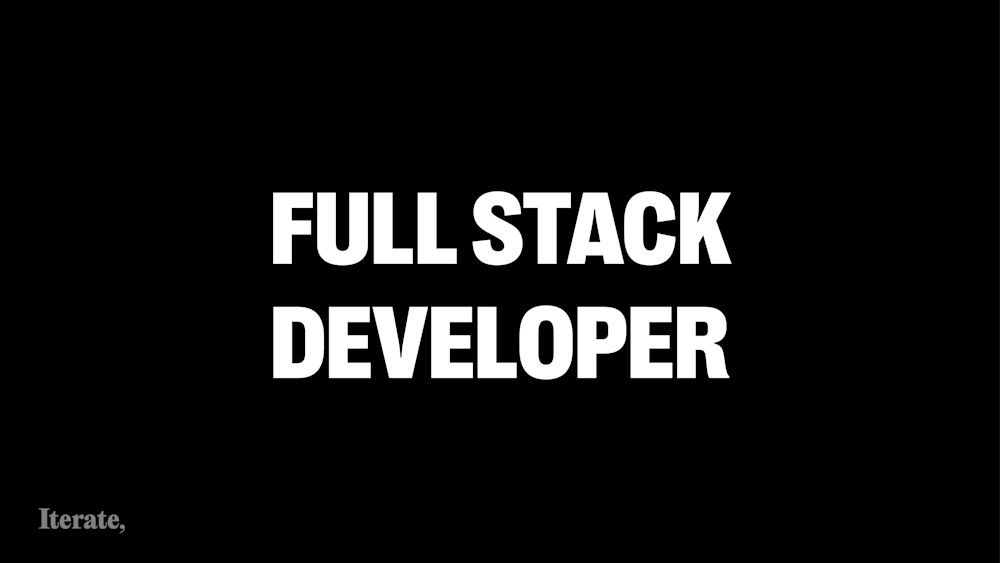Table of contents
A full stack developer is someone who creates, designs, and maintains both the back end and front end across different platforms, such as websites, applications, databases, and servers.

What is a full stack developer?
The role is typically part of a development or product team. The main objective of a full stack developer is to ensure that a web application or software product functions as desired, with a solid internal architecture and easy-to-use interface.
Part of the job as a full stack developer is to develop and maintain both the server side and client side. This includes tasks such as building a back-end system that handles data storage, retrieval, and processing. In addition, the role also involves creating a user-friendly and responsive interface through front-end development.
At The Org, we believe in increasing transparency in recruitment and hiring. That’s why we strive to make it easier for top talent to find where they fit in. Explore more than 400,000 organizations, and stay up to date with open positions with The Org.
In conclusion, a full stack developer plays a critical role in ensuring a solid internal architecture and a user-friendly interface of a digital product or service that is aligned with business objectives.
At The Org we have analyzed the organizational structure of tens of thousands of companies. As a result, we’ve collected information on the typical salary range, job requirements, and typical profiles of who currently works as a full stack developer.
Let’s take a look at the data.
How much does a full stack developer make?
According to Glassdoor, the average salary of a full stack developer across industries in the United States is $85,247/yr.
However, not all industries are created equal. According to the data, the highest average salary for a full stack developer is found in the real estate industry: $92,748/yr.
What are the job requirements of a full stack developer?
The job requirements for a full stack developer typically include:
- Experience in web development, or a degree in computer science, computer engineering, or a related field.
- Front-end development skills, including proficiency in using programs such as HTML, CSS, and JavaScript, and frameworks like React, Angular, or Vue.
- Back-end development skills, including proficiency in using programs such as PHP, Java, C#, Ruby, and Python, and frameworks like Django, Spring, .Net, Express.js, and Rails.
- The ability to adapt to new technologies quickly.
- Excellent problem-solving and analytical skills.
- The ability to communicate and collaborate with other technical and non-technical departments within an organization.
Full stack developers in the Wild
It’s one thing to know the requirements of a role — it’s another to see what that role looks like in the wild. At The Org, we believe that putting a face to the job title and seeing for yourself where the role fits into the company makes it much easier to picture yourself in it.
Where in the company hierarchy does full stack developers fit in? Who are their closest team members, and who do they report to? What career growth opportunities does full stack developers have within the company structure?
We’re here to help you answer those questions. Explore live positions for full stack developers and see the role in the wild here.
Hiring a full stack developer
Is your org looking to hire a full stack developer?
If so, you may benefit from reading our comprehensive 10-step guide on recruitment and hiring. In this guide, you’ll learn all about the hiring process. From writing your job description, to developing candidate sourcing strategies, to common interview questions, to writing a job offer letter — we’ve got you covered from start to finish.
At The Org, we believe traditional recruiting is in need of a refresh. Candidates want to know who they’ll work with, not just what they’ll do. Workplace culture, interpersonal relationships, and company values are more important now than ever.
And what better way to showcase your company’s unique culture than through your Org Chart?
Highlight different teams in your organization, the people that make these teams great, and show candidates how they fit into the big picture.
Your Org Chart is a novel and effective way to show candidates where they fit in, and to show off your greatest asset: your people.
Explore Org Charts here, and sign up today to create your own customized Org Chart for your company.


The ORG helps
you hire great
candidates
Free to use – try today